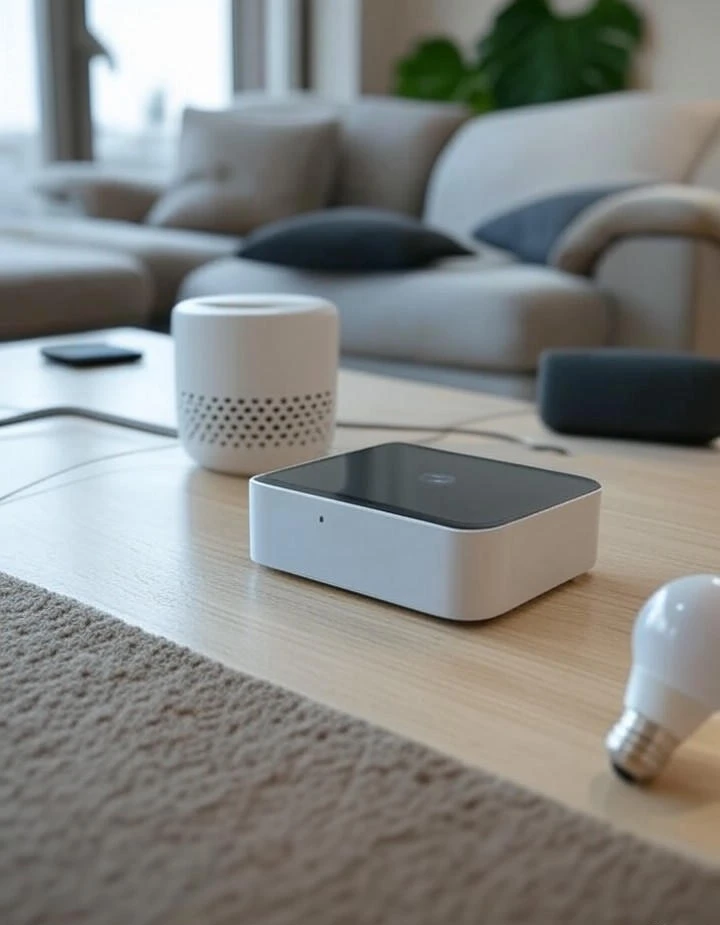
This website uses cookies
We use Cookies to ensure better performance, recognize your repeat visits and preferences, as well as to measure the effectiveness of campaigns and analyze traffic. For these reasons, we may share your site usage data with our analytics partners. Please, view our Cookie Policy to learn more about Cookies. By clicking «Allow all cookies», you consent to the use of ALL Cookies unless you disable them at any time.
What is GPT?
Generative Pretrained Transformer (GPT) is a series of neural networks developed by OpenAI for natural language processing (NLP) tasks. GPT uses deep learning technologies to "learn" from large amounts of text data and then use the acquired knowledge to solve a wide range of tasks, such as automatic translation, sentiment analysis, and text generation.
The history of GPT began in 2018 when the first version of the GPT model was released. Since then, GPT has become one of the most popular and widely used tools for natural language processing, thanks to its efficiency and versatility. Each subsequent version of GPT has been improved and has greater power and accuracy than the previous one. The latest version, GPT-4, was announced on March 14, 2023, and OpenAI wrote in its blog announcing GPT-4 that "GPT-4 is more reliable, creative, and capable of handling much more complex instructions than GPT-3.5."
Development of GPT architecture
The development of GPT architecture is one of the most important components of improving GPT. In the process of developing new versions of GPT, various technologies, and methods were used to improve the efficiency and accuracy of the models. For example, some of the key methods used to improve GPT architecture include:
Transformer-based Architecture: GPT is based on the Transformer architecture, which was introduced in 2017. This architecture is a neural network that can efficiently work with sequence data, such as texts.
Pre-training Techniques: GPT is trained on a large amount of text data using pre-training to improve the quality of model training. This method allows GPT to learn a wide range of language structures and relationships between words and phrases.
Fine-tuning Techniques: After pre-training, GPT can be further trained on a narrower set of data using fine-tuning methods. This allows GPT to obtain more accurate and specific information for solving specific tasks.
Attention Mechanisms: One of the key technologies used in the GPT architecture is attention mechanisms. They allow GPT models to focus on specific parts of the text and make more accurate conclusions about its content.
As a result of using these and other technologies, new versions of GPT were developed, each of which becomes more accurate, powerful, and scalable. Each subsequent version of GPT surpasses the previous one in terms of scale and efficiency. The future development of GPT may be aimed at improving models to make them more accurate and efficient in processing natural language, as well as expanding the areas of GPT application in various industries.
The applications of GPT
GPT has a wide range of applications in various fields related to natural language processing. Some of the most interesting applications of GPT that are already being used or may be used in the near future include:
Machine translation: GPT can be used for machine translation, allowing text to be automatically translated from one language to another. For example, Google Translate already uses GPT to improve the quality of translated texts.
Text generation: GPT can be used for generating texts such as articles, news, advertising copy, and more. For example, some media companies already use GPT for creating automatic news articles.
Sentiment analysis: GPT can be used for analyzing the sentiment of texts, allowing the emotional tone of the text to be determined. This can be useful, for example, for analyzing user reviews of products or services.
Automation of text processing: GPT can be used for automating various text processing tasks such as text classification, text clustering, and more.
Artificial intelligence: GPT can be used for creating artificial intelligence that can process natural language and make decisions based on this information. This can have great importance for various industries, including business, medicine, science, and others.
Assistance for people with disabilities: GPT can be used for creating applications that assist people with disabilities, such as those with visual or hearing impairments, in understanding texts and communicating in natural language.
GPT has enormous potential for application in various fields related to natural language processing and can significantly improve the quality of life for people and the efficiency of organizations.
Recent advances in the development of GPT
In the last few years, the development of GPT has been progressing rapidly, and recent advancements in this field are opening up new possibilities for the application of GPT in various domains. Some of the recent achievements in the development of GPT include:
GPT-4: The latest and most powerful version of GPT is GPT-4. It is the most scalable and accurate GPT model, capable of generating text, answering questions, and performing other tasks.
Openness and accessibility: OpenAI, the company behind the development of GPT, continues to strive for openness and accessibility of GPT models. In 2023, OpenAI introduced the GPT-4 API, which allows developers to use GPT-4 in their applications.
Using GPT in medicine: In 2022, research showed that GPT can be used to process medical data-related texts. The study demonstrated that OpenAI's GPT-3 algorithm can effectively identify Alzheimer's disease in 80% of cases. This opens up new opportunities for using GPT in medical applications.
Continuous improvement in quality: With each new version of GPT, the quality of models improves, and accuracy and scalability increase. This opens up new opportunities for using GPT in various domains, including science, business, and others.
These and other advancements in the development of GPT demonstrate that GPT models are becoming increasingly accurate, powerful, and scalable, enabling the creation of more effective and innovative applications based on GPT.
Challenges and risks of rapid development of GPT
While the rapid development of GPT can bring many benefits in various domains such as natural language processing and artificial intelligence, it is also associated with risks and challenges. Some of these include:
Text forgery: GPT can be used to create fake texts that may be implausible and misleading. This can be particularly dangerous in the context of media and news, where fake news can affect public opinion and decision-making.
Freedom of speech limitations: The development of GPT can lead to limitations of freedom of speech and threaten privacy rights, as GPT can be used to track and analyze large volumes of text data.
Security: There are security issues associated with the use of GPT, such as the possibility of hacking systems and gaining access to confidential data.
Ethical concerns: The use of GPT can raise ethical concerns related to the manipulation and control of information, as well as automatic decision-making that may have a negative impact on people.
Reduction in demand for manual labor: The rapid development of GPT can lead to a reduction in jobs related to text and language data processing, as many tasks can be automated using GPT.
The rapid development of GPT presents a complex set of risks and challenges that need to be taken into account in the development and use of this technology. Measures need to be taken to protect privacy and security, as well as to conduct ethical discussions and develop rules for regulating the use of GPT.
Opportunities and perspectives
Despite the risks and challenges associated with the rapid development of GPT, this technology also presents numerous opportunities and perspectives. Some of these include:
Improvement of quality of life: GPT can be used to create new applications and services that help people improve their quality of life and solve complex natural language processing tasks.
Development of new products and services: GPT can be used to create new products and services in various industries, such as healthcare, banking, advertising, and many others.
Improvement of productivity: GPT can improve the productivity and efficiency of organizations by automating text processing processes and reducing personnel costs.
Increase in accuracy and reliability: GPT can improve the accuracy and reliability of natural language processing-based decisions, such as sentiment analysis, text classification, and others.
New scientific research: The rapid development of GPT opens up new opportunities for scientific research, including studying language properties, developing new natural language processing methods, and others.
Reduction of communication barriers: GPT can be used to create tools that allow people from different countries and cultures to communicate more easily in their natural language.
These and other perspectives and opportunities associated with the development of GPT show that this technology has enormous potential to improve the quality of life for people and the efficiency of organizations in various industries. However, to achieve these goals, it is necessary to consider the risks and challenges associated with the development of GPT and take appropriate measures to address them.
The prospects of the GPT market are quite promising as it is a technology that can be applied in various industries. Some of these industries include:
Growth of the GPT market: The GPT market is growing rapidly due to the constant development and improvement of technology. According to experts, the GPT market could reach $4.5 billion by 2025.
Increasing demand for GPT: The demand for GPT is expected to grow in the future as more companies and organizations realize the potential of this technology and begin using it in their work.
New opportunities for startups: The development of GPT opens up new opportunities for startups that will use this technology to create innovative products and services.
Development of GPT ecosystem: With the development of the GPT ecosystem, new tools and applications will emerge that will allow users to work with GPT more easily and create new products and services.
Impact of GPT on business models: GPT can change business models in various industries as this technology can be used to automate many processes and reduce personnel costs.
However, for the successful use of GPT, it is necessary to take into account the risks and problems associated with this technology and take measures to address them.
What is Chat GPT thinking about?
Let's explore the potential futures envisioned by AI itself. However, let's not forget that our world is not black and white, so what GPT tells us is a hyperbolic future in one of two directions.
Dark version
The worst-case scenario for humanity associated with the rapid development of AI and GPT could pose some threats, such as:
Job loss: The development of GPT may lead to significant job loss in industries related to text and language data processing. If this process happens too quickly, it could lead to social instability and an economic crisis.
Information manipulation: GPT can be used to manipulate information, which can lead to the mass dissemination of false and misleading information. This can become the basis for the spread of fake news, as well as lead to increased levels of aggression and violence.
Security risks: GPT can pose a threat to security if malicious actors use it to create malicious programs that can hack systems and gain access to confidential data. This can lead to major cyberattacks on corporations and government organizations.
Threats to personal privacy: GPT can be used to track and analyze personal information, which can violate rights to privacy and individual freedom. If GPT is used for monitoring and control of people, it can lead to discrimination and human rights violations.
The growing divide between the rich and the poor: If the development of GPT continues at its current pace, it could lead to an increase in the gap between the rich and the poor. Wealthy companies and individual entrepreneurs can benefit greatly from using GPT, while poor countries and communities may be excluded from the process.
These are just some of the possible worst-case scenarios associated with the rapid development of GPT.
Light version
The best-case scenario for humanity related to the rapid development of AI and GPT may include the following possibilities:
Improvement of quality of life: The rapid development of GPT can lead to the creation of new applications and services that will help people solve complex problems related to natural language processing, information management, and others. This can improve the quality of life for people and increase their productivity.
Improvement of healthcare: The development of GPT can improve healthcare by creating new methods of diagnosis and treatment of diseases, as well as reducing the time for researching new drugs.
Solving global problems: GPT can be used to solve global problems such as climate change, poverty reduction, and increasing education levels. This can lead to a more sustainable and just world order.
Creation of new jobs: The development of GPT can lead to the creation of new jobs related to the development and use of this technology, such as engineers, data analysts, and others.
Increased innovation: The rapid development of GPT can lead to the creation of new innovations and technologies that will be used in various industries and help improve people's lives.
More effective management: GPT can help improve the management of organizations and government structures, increasing efficiency and reducing personnel costs.
The rapid development of GPT represents tremendous potential for improving people's lives and solving global problems.
Conclusion
GPT is one of the most promising technologies of our time, with enormous potential for use in various industries. The rapid development of GPT can lead to the creation of new applications and services, improvement of quality of life, solving global problems, creating new jobs, and increasing innovation.
However, when using GPT, it is necessary to consider the risks and problems associated with this technology, such as job loss, information manipulation, security risks, threats to personal privacy, and increasing the gap between the rich and the poor.
To fully realize the potential of GPT and minimize risks, appropriate regulation and control of AI development are necessary, as well as deep discussions and the development of ethical principles for the use of GPT. Only in this way, we can ensure the safe and effective using GPT for improving our lives and solving global problems.



